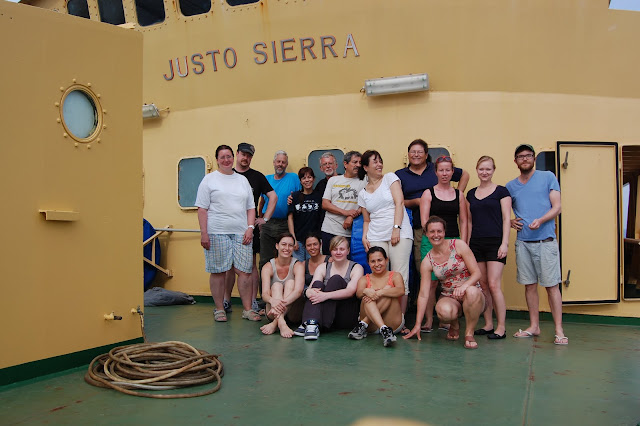At every station we are going to measure different fysical and chemical parameters in the sea, from the surface to the bottom. For this purpose we use the CTD Rosette system. The CTD measures
Conductivity,
Temperature and
Depth. On the CTD there is also an oxygen electrode, a fluorometer, turbidity sensor and a lightmeasurer. The flourometer measures the amount of chlorophyll in the water.
From all the different parameters a profile is made, which are real time shown on the computer. From this profile it's decided at which water depths samples should be taken.
On the CTD there are 12 bottles attached. When the CTD is decending the watercolumn all the bottles are open. The bottles are controlled with a remote, and can be closed in different depths. In that way water samples can be obtained down through the water column at the wanted depths.
 |
| Retriving the CTD |
As we do not have much time at each station, we only take around 3 water samples. One in the top layer, one in the chlorofyll maximum and one in the bottom layer. If there is further stratification in the water column, more samples will probably be taken. As the area we are going to is unexplored everything is still unknown and everything (well, in parts.. ) will be revealed. :)
The water samples is to be analysed for algeas. In this way it is posible to compare the algae in the bottom sediment with the algeas in the water samples. For further information about this, see Marikas text.
















 Each filter runs as follows:
Each filter runs as follows: 









